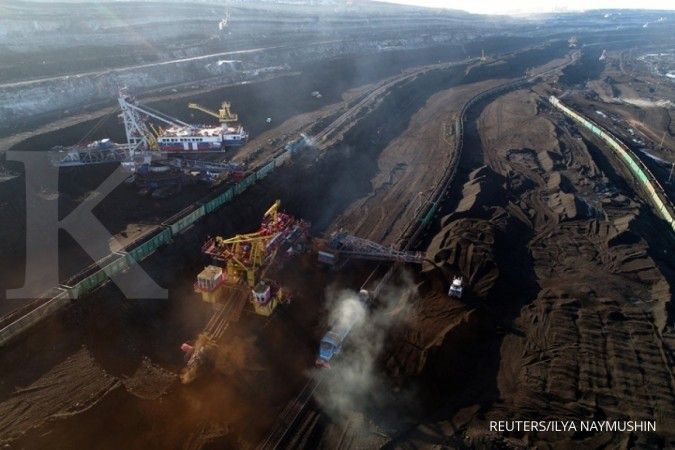INDONESIA - JAKARTA. The Ministry of Energy and Mineral Resources noted, as of March 15, 2019, the national coal production had only reached 37.67 million tons. That amount is equivalent to 7.70% of the national production target recorded in the 2019 Work Plan and Budget which amounted to 489.13 million tons.
Director of Coal Development and Business of the Ministry of Energy and Mineral Resources Muhammad Hendrasto said that the number had not yet calculated the production from the regional mining business permit (IUP) holders. As a result, the amount of production is still based on reports that go to the Ministry of Energy and Mineral Resources, which comes from companies holding central government permits.
According to Hendrasto, the amount of production is still considered reasonable, because it is projected that the new company will boost production when it starts entering Semester II. "It has not calculated the regional IUP, and it is still the central permit. Approximately (production begins to increase) starting in Semester II," he said when asked by Kontan.co.id, at the DPR-RI Complex, Tuesday (3/19).
The same thing was also conveyed by Executive Director of the Indonesian Coal Mining Association Hendra Sinadia. Hendra said that in the first two months of the beginning of the year, companies usually still have not increased production, because they are still affected by weather factors and related to the optimization of heavy equipment.
"The first two months of the year are usually slow. Usually, the second semester of production tends to increase," Hendra said.
Furthermore, Chairman of the Indonesia Mining Institute Irwandy Arif saw coal production would increase significant changes in the next six months. However, Irwandy assessed the realization of production which only reached 7.70% of the total national production target had a positive impact on the psychological market.
Irwandy said coal production which had not climbed at the beginning of this year could reduce the supply rate to the market, so there was no oversupply. As a result, coal prices, especially those with a low calorie of 4,000 kcal / kg-4,200 kcal/kg can be pushed after a significant decline in the past six months.
Moreover, the government tightened coal production quotas and set a lower production target compared to last year's realization of 557 million tons. "As long as a significant reduction in total production, especially in Asia, will have a psychological impact on coal prices," he explained.
Hendra agrees with this. He explained, the current low-calorie coal price had reached US$ 40 per ton.
The price is better than the amount in the last six months which was pushed around US$ 35 per ton. "Even from October to November the price was below US$ 30 per ton," Hendra said.
In addition to the fact that the supply factor which is maintained due to production has not yet climbed, the increase in low-calorie coal prices is also influenced by external factors. That is triggered by demand from the Chinese market which began to increase since mid-February.
Hendra is optimistic that the strengthening of low-calorie coal prices from the end of February to March 2019 will encourage an increase in Indonesia reference coal prices in April.
Understandably, the March 2019 reference coal prices were pegged at US$ 90.57 per ton or the lowest in the last six months. The reference coal prices in the first three months of 2019 are still far from the average reference coal prices in 2018 which reached US$ 98.96 per ton. "I think it will improve, and be reflected in the April reference coal prices," Hendra said.
Hendra said, as one of the largest coal exporters in the world, policies made by the Indonesian government were very much considered and had an effect on market movements and global coal prices. This year, Indonesia's low-calorie coal exports are predicted to fill around 13% of coal in the worldwide market.
Meanwhile, external factors in the form of China's import policy greatly influenced the Indonesian coal market because China occupied the top position of Indonesia's coal export destination countries. "Our exports to China are around 30% (of Indonesia's total coal exports), so it is significant," he said.
/2018/10/18/100672131p.jpg)











